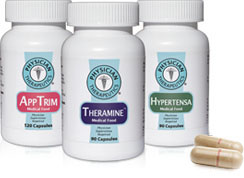FDA has finally published a guidance on the use and classification of “Medical Foods”. As has been the recent trend of FDA, the guidance is formatted as a Frequently Asked Questions (FAQ) document, as opposed to a guidance for how to determine, implement, execute, etc. In this case, however, the format may be appropriate, as many of the questions surrounding medical foods surround what IS a medical food, and what are the limits on the ability to use the statutory classification.
The guidance deals with the following topics:
- What is a medical food?
- Has FDA established by regulation any criteria that clarify the statutory definition of a medical food?
- Does FDA regulate medical foods as drugs?
- Do the labeling requirements for nutrient content claims apply to medical foods?
- Do the labeling requirements for health claims apply to medical foods?
- What labeling requirements apply to medical foods?
- What other FDA requirements apply to medical foods?
- Does the Food Allergen Labeling and Consumer Protection Act of 2004 (FALCPA) apply to medical foods?
- Where can I find more information on FALCPA’s labeling requirements?
- What are the registration requirements for medical food facilities?
- Does FDA maintain a list of medical foods?
- Is there a compliance program guidance manual for medical foods?
- What is the purpose of FDA’s compliance program for medical foods?
- Does FDA require that medical foods be made available by written or oral prescription?
- How does FDA interpret “under the supervision of a physician”?
- May the labeling of a medical food bear the symbol “Rx only”?
- Should National Drug Code (NDC) numbers be used in the labeling of medical foods?
- What requirements apply to ingredients added to medical foods?
- Where can I find additional information on food additives and GRAS ingredients?
- Does FDA generally consider inborn errors of metabolism (IEMs) to be diseases or conditions that a medical food could be used to manage?
- Are there any examples of specific IEMs that medical foods could be used to manage?
- Does FDA consider pregnancy to be a disease?
- Are there distinctive nutritional requirements associated with pregnancy?
- Does FDA consider pregnancy to be a condition for which a medical food could be labeled and marketed?
- Are there distinctive nutritional requirements associated with the management of diabetes mellitus (DM)?
- Does FDA consider DM to be a condition for which a medical food could be labeled and marketed?
- Does FDA consider diseases resulting from essential nutrient deficiencies (e.g., scurvy, pellagra) to be diseases for which a medical food could be labeled and marketed?
- Does FDA consider conventional foods that, in their natural state, do not contain protein or are low in protein to meet the definition of a medical food?
The guidance can be found here: FDA Guidance on Medical Foods

